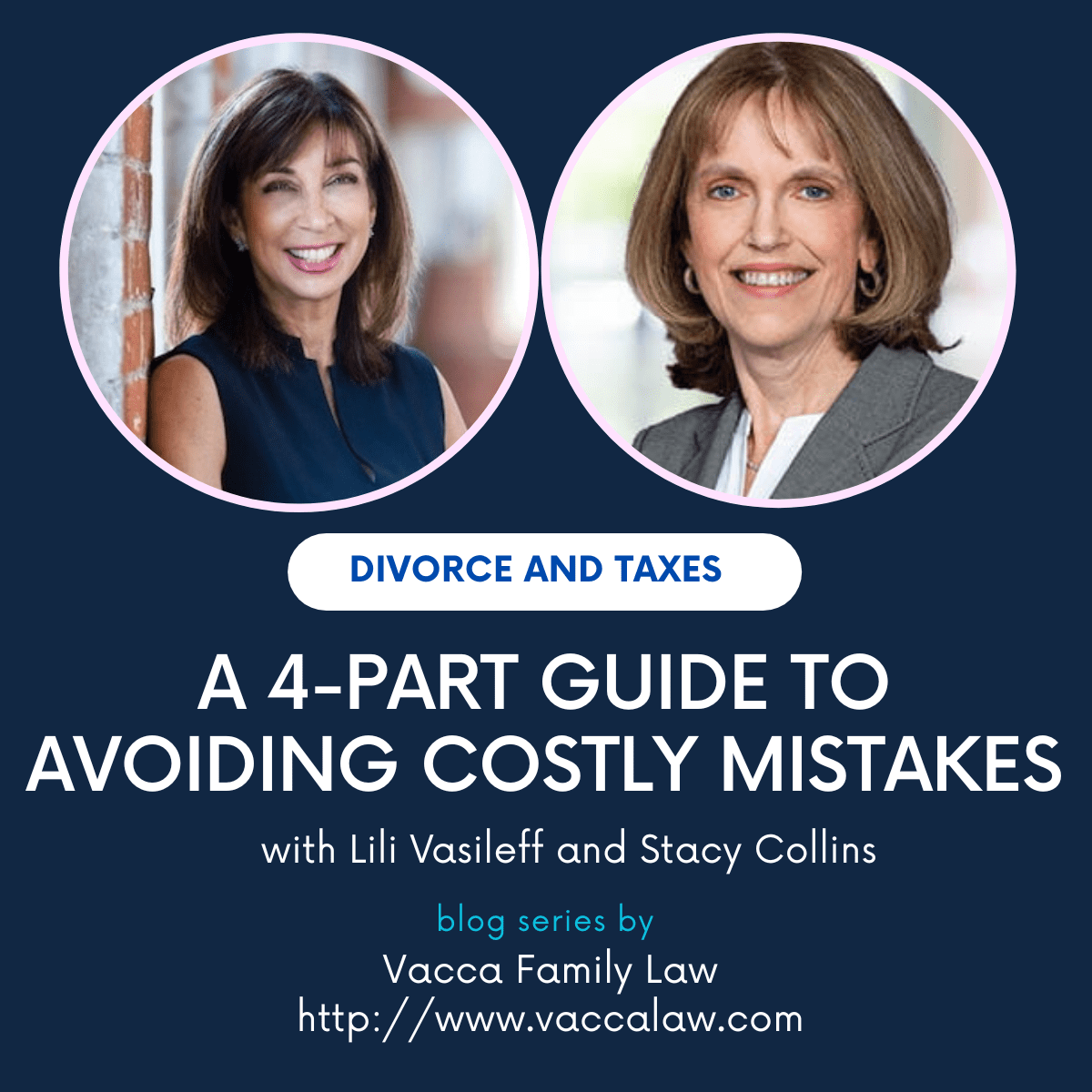Lili Vasileff is quoted in a recent article by Bev O’Shea for the Atlanta Journal Constitution about the financial decisions that can complicate the emotional upheaval of a split. Before you agree to any division, Lili says “it is really important for the receiving person to understand the nature of each investment.”
How to Untangle Your Finances in a Divorce
By Bev O’Shea for the Atlanta Journal Constitution – June 23, 2017
Financial decisions get complicated amid the emotional upheaval of a split. “So many people say, ‘Oh, it’s going to be an amicable divorce,’ and three months later, they are keying each other’s cars,” says Kitty Bressington, a certified divorce financial planner in Rochester, N.Y.
Don’t let your emotions derail your economic well-being. Here are three major areas where you’ll need to make clearheaded decisions — sometimes well before anyone visits a lawyer.
Credit Accounts
First, make sure you have an independent credit identity, says money coach Patricia Stallworth, author of “How to Get Divorced Without Losing Your Blouse.” Pull your credit reports and understand every account: Is it solely your account, or a joint account, or are you an authorized user on your spouse’s account? If you have no individual credit accounts, apply now, while you can use joint income to qualify.
Before you divide accounts and balances due, Stallworth advises making a budget based on after-divorce income to see how much debt you can handle. It’s also smart to consult an attorney and a financial advisor familiar with your state’s laws on debt responsibility.
Existing credit accounts — credit cards, car loans and personal loans — can be handled three different ways:
Agree to pay off and close accounts now: Wipe out balances, then close joint accounts and remove each other as authorized users on individual accounts. This cuts out the risk that a spouse will run up charges or fail to pay debt as it’s divided later.
Agree to close now and pay off later: Close joint accounts and revoke authorized user privileges, but leave the balance to be addressed later in negotiations. This stops new charges, but you’re still at risk. Creditors aren’t bound by your divorce decree and may come after you for joint debt if your ex doesn’t pay as agreed. When splitting debt, consider insisting on a balance transfer of your ex’s portion to a new account in his or her name alone.
Do nothing: It is not illegal to leave an ex-spouse on a credit account — it’s just extremely risky.
Home
Emily Doskow, an attorney in Oakland, California, wrote the “Essential Guide to Divorce” and has seen her share of testy property settlements. She says deciding what to do with a home comes down to three basic options:
One spouse buys the house from the other: Reaching an agreement on fair market value is just one step in the process. People may think they can just “take the selling spouse off the loan,” Doskow says. “Of course, the bank doesn’t want to do that. Because then one person is responsible for the loan that two people used to be responsible for.”
The usual answer, refinancing, can be a reality check: One spouse must be able to qualify for the loan. Even then, Doskow says, “there’s often a gap between the amount of the loan someone can qualify for and what payments they can actually make.”
You sell and divide the proceeds: The local market will determine the home’s value, reducing that source of dispute. The difficulty may be accepting the necessity. “I think it’s very common for people to be very attached to their home,” Doskow says. It’s a matter of “being realistic about what’s possible and knowing that sometimes selling is your path of least resistance.”
You continue as co-owners: This has a high level of difficulty. All contingencies — taxes, maintenance, what to do if either of you faces financial hardship — need to be spelled out in a co-ownership agreement as part of the divorce. “Essentially, the spouses are entering into a separate business relationship, post-marriage and post-divorce,” Doskow says. “So, it’s a real estate ownership contract, in some ways.”
Investments
Before you agree to any division, “it is really important for the receiving person to understand the nature of each investment,” says Lili Vasileff, a certified divorce financial analyst and president of Divorce and Money Matters, a practice specializing in wealth protection. Taxes and fees can make the true dollar value of an asset a lot lower than it looks on paper. Consider:
If the investment is right for you: If your spouse is the more aggressive investor, you might not choose to keep assets with that risk level. It’s generally better to sell before dividing the account. “If you … liquidate it after the fact, then you bear the entire tax impact,” Vasileff says. That capital gains tax bill could be a doozy.
The type of account: Assets in a qualified retirement plan — like a 401(k), 403(b) or pension plan — get preferential tax treatment. Splitting the money under a qualified domestic relations order, or QDRO, lets you keep that tax-favored status as long as you do a direct transfer; think IRA to IRA, or a rollover from a 401(k) into an IRA.
Fees for liquidating accounts: An investment firm may see divorce as a signal that it’s about to lose half of an account. To make up for lost business it may charge fees for outgoing transfers. These are sometimes negotiable, Vasileff says, or you may avoid fees by opening separate accounts at the firm.



